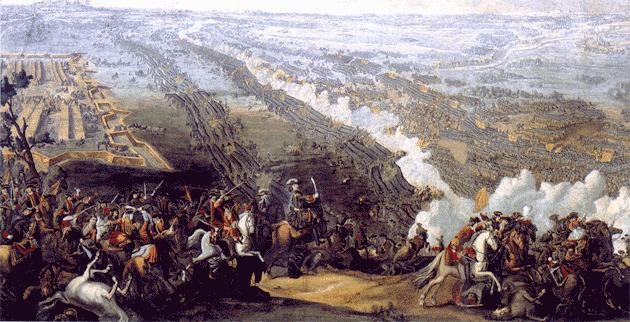|


The birth of Russia as a great European power can be traced to 27 June 1709
on a Ukrainian battlefield outside Poltava. Conversely the losing Swedes
experienced the end of their age of Greatness on the very same field on the
same day, although they date it to 28 June because Swedes and Russians used
different calendars (according to the Gregorian calendar used today the
battle occurred 8 July). This hot summer day was in fact the bloodiest day
in Swedish history and already at noon had over 8 000 Swedish soldiers been
killed and 2 600 been taken as prisoners. Three days later the remaining 13
000 soldiers and nearly 7 000 civilians surrendered at Perevolochna and
marched into Russian captivity The war between Sweden and Russia would
continue for 12 more years but Sweden would never recover from the loss of
these battle hardened veterans of whom only 4 000 would ever see their
native country again.
Road to Poltava - A short description of the Russian
campaign until the battle of Poltava.
The Battle of Poltava
The Swedish army's strength and losses in the
battle of
Poltava.
The Russian army's strength and losses in the
battle of
Poltava.
Swedish uniforms in the battle of Poltava.
Russian uniforms in the battle of Poltava.
The redoubt battle
The lost battalions led by Roos.
The opposing armies' order of battles.
What the sources say about the armies' order of battles.
Russian regiments which according to Höglund's book
participated in the battle of Poltava.
The image above is a painting from 1726 by Pierre-Denis Martin (1663-1742).
It depicts the battle seen from the north with the Russians on the left side.
It is however not historically correct. The hill in the foreground does not
exist and the battalions are formed in five ranks instead of four. The
Swedish army is also depicted as much stronger than it really was. |

